
Vol. XI, No. 2, July-September 2012
Finding Terroir - A Sense of Place in Outdoor Environments
Terroir is from the French language and is often used to describe outdoor spaces that provide a sense of place or a space that is the collection of the local environmental aspects that gives each place its own special character.
If the idea that each childcare center or school is unique unto itself is applied in one geographic location, then each outdoor play space and garden should be one of a kind. Unfortunately, this does not seem to be the direction that outdoor garden design is taking in early childhood.
Play spaces could be plucked from here and easily plunked down in another country, state or region. They have no specific identity; they have no sense of place or even ownership. Just as we say don’t shop in the catalogues for our indoor equipment-let’s not just shop in the catalogues for outdoor spaces. Choosing natural equipment from a catalogue can make your outdoor play garden look like green placeholders but it has no identity or soul.
I am not saying that every naturalized outdoor space needs to be an over-the-top horticultural and design statement. But if each center celebrates their individuality as well as the land that the outdoor space sits on, then our outdoor play gardens will reflect who we really are as early childhood professionals and gardeners.
Whether your play garden or naturalized play space is professionally designed or not, use it to embrace who you are as an early childhood professional, where you are and where you came from. Who are your staff, children and families and how can the garden support their goals and desires? Check out the ideas below for examples of my interpretation of the word terroir.
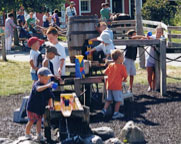
One of our oldest clients is a children’s farm outside of Boston. The outdoor environments that we have created for them have always been rugged and easy for farmers to build inexpensively. This rugged water table works for all ages and adds to the farming theme.
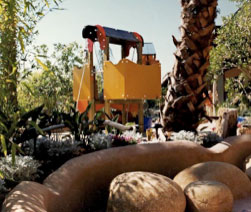
Another one of our first play gardens designed and built in 1998 was in San Jose, California at a children’s play center. I love this photo as I think it shows what naturalized spaces can offer in terms of the sensory input-see how the smooth stones are in contrast to the rough bark. Believe it or not this play garden was on a parking lot!
One of the more recent gardens that we have designed and constructed has been for a Jewish Community Center. We used a bold entrance to welcome families. On this same garden we used a small footbridge to connect points of interest in the garden, including this wooden frame to be used for a form of Jewish dodgeball.
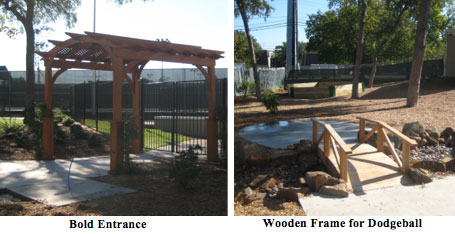
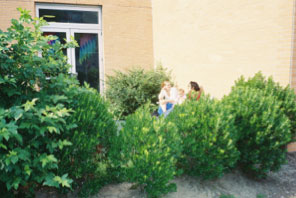
Part of being in early childhood is having the need to look at other’s prepared environments. In the past, I visited the early education center at the Massachusetts Institute of Technology which has a unique environment both indoors and outdoors. Check out this little hide-away where parents can gather. This space transmit the values that parents and staff are important parts of the outdoor prepared environment.
Our colleague, Claire Warden, in Scotland shared her beautiful photo of a willow hut gathering space at her center. In this wet region of the world, willows grow willingly and can easily create a sense of place. 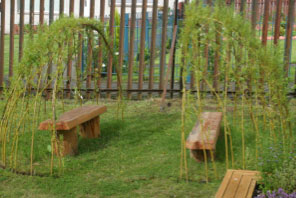 This idea would not work in climates that won’t support this type of plant growth.
This idea would not work in climates that won’t support this type of plant growth.
Hopefully these ideas will help you understand better how to incorporate your mission, goals and values into your outdoor space to create your sense of terroir. We need gardens spaces across early education centers in the United States that reflect the individuality and complexity of each program and site.

